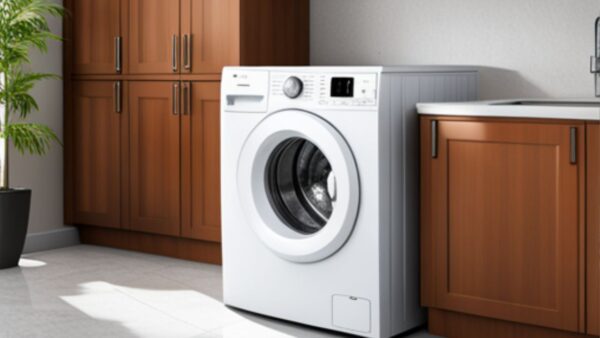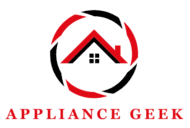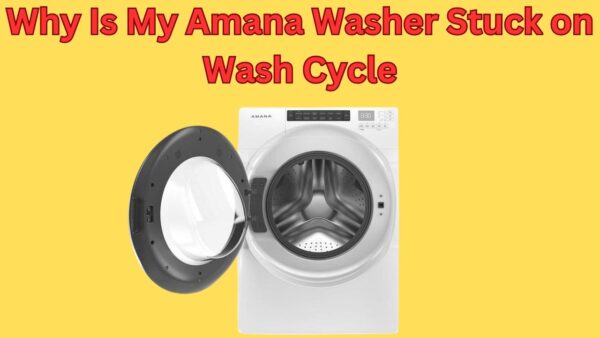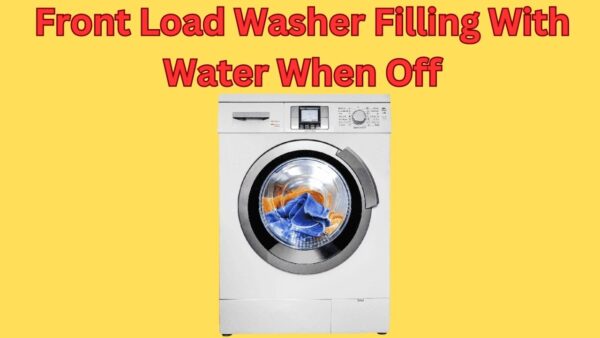When it comes to conserving energy and preserving our clothes, using cold water in our washing machine is often the way to go.
However, there are times when our trusty appliance seems to have a mind of its own, defaulting to hot water instead – much to our dismay.
This article will shed light on the 10 common causes as to why your washing machine might be using hot water instead of cold.
Why Is My Washing Machine Using Hot Water Instead of Cold

1. Incorrect Water Supply Connection
Cause
One common cause for your washing machine to use hot water instead of cold could be an incorrect water supply connection.
This typically happens when the hot and cold water supply hoses are mistakenly switched during the installation of the machine.
Hence, when you select the cold wash option, the machine draws hot water, and vice versa. It’s a simple yet overlooked mistake that can have your laundry coming out less than perfect.
Solution
The solution is pretty straightforward – check the back of your washing machine. You should see two hoses: one for hot water and one for cold.
Make sure the cold water hose is connected to the cold water faucet and the hot water hose to the hot water faucet. If they’re reversed, simply switch them back.
2. Faulty Water Inlet Valve
Cause
A faulty water inlet valve can often be the culprit behind issues like a leaky refrigerator or an ice maker that won’t fill with water.
This valve, crucial in controlling the flow of water into your refrigerator, may malfunction due to factors such as age, usage, or damage caused by hard water deposits.
Solution
To resolve this problem, first determine if the valve is indeed defective. If the valve is not opening or closing correctly, it needs to be replaced.
It’s essential to ensure the replacement valve matches your refrigerator model.
3. Issues with Temperature Control Switch
Cause
The primary issue with the temperature control switch often lies in mechanical wear, poor electrical connection, or a malfunctioning sensor.
Over time, these components may degrade, leading to an inability to accurately regulate temperature.
Incorrect temperature readings can result in overheating or underheating, potentially causing significant damage to the device and impeding optimal performance.
Solution
Addressing issues with the temperature control switch involves thorough inspection and, if necessary, replacement of the faulty parts.
Regular maintenance checks can help identify problems early, preventing severe damage and prolonging the device’s lifespan.
4. Broken Heating Element
Cause
The primary cause of a broken heating element is wear and tear over time.
As a heating element continually heats up and cools down, the repeated expansion and contraction can lead to damage and eventual failure.
Other frequent causes include power surges, improper installation, or using the appliance beyond its capacity.
Solution
The most reliable solution to a broken heating element is to replace it with a new one.
For this, you will need to disconnect the appliance from the power source, remove the defective heating element, and install the new one following the manufacturer’s instructions.
It’s crucial to use a replacement that matches the specifications of the original heating element.
5. Malfunctioning Thermostat
Cause
A thermostat might malfunction due to various reasons. The most common causes include dead batteries, incorrect calibration, and wiring issues.
Aging is another factor to consider since older thermostats are more likely to malfunction than newer models.
Solution
Addressing a malfunctioning thermostat starts with identifying the root cause. If the issue is dead batteries, changing them could solve the problem.
If the thermostat is incorrectly calibrated, a professional might need to recalibrate it.
In case of wiring issues, it’s advisable to call a professional to avoid electrical hazards. For older thermostats, considering an upgrade to a newer model can be a practical solution.
6. Problems with the Mixing Valve
Cause
The most common issue with the mixing valve is a failure in the internal mechanism, typically caused by mineral build-up or wear and tear over time.
This can disrupt the balance between hot and cold water, resulting in inconsistent temperature control.
Key Causes: Mineral build-up, wear and tear, inconsistent temperature control.
Solution
A short-term solution to a faulty mixing valve is frequent cleaning to reduce mineral deposits. However, in the long term, replacement of the valve is often necessary.
It’s crucial to consult with a professional plumber, who can guide you on the suitable replacement valve and carry out the installation effectively.
Key Solutions: Frequent cleaning, professional consultation, valve replacement.
7. Wrong Settings Selected on the Machine
Cause
The issue of “Wrong Settings Selected on the Machine” typically arises due to human error or a lack of understanding of the machine’s operational parameters.
This leads to incorrect configurations that can adversely impact the machine’s performance and potentially result in damage or unexpected downtime.
Key takeaway: Human error and lack of knowledge are the primary causes of incorrect settings on a machine.
Solution
The solution to this problem is two-fold. First, thorough training should be provided to individuals responsible for machine operation, ensuring they understand all settings and their implications.
This can significantly reduce the occurrence of human error.
Second, many machines now come with smart features that can suggest optimal settings or even automatically adjust them based on the task at hand.
Key takeaway: Proper training and leveraging smart features of the machine are effective solutions to wrong settings being selected.
8. Blocked Cold Water Hose
Cause
A blocked cold water hose can be the result of various factors. The most common cause is the accumulation of mineral deposits over time, which can lead to significant blockage.
Another potential cause could be due to debris or foreign objects getting trapped inside the hose. Extreme weather conditions might also cause the water inside the hose to freeze, leading to blockage.
Solution
To rectify a blocked cold water hose, a few steps can be followed. Initially, try flushing the hose with hot water to dissolve any mineral buildup.
If this doesn’t work, you can use a long, thin brush or a plumber’s snake to manually remove the obstruction.
If freezing is the cause, the hose should be moved to a warmer place until the ice melts. Regular maintenance every six months could also prevent blockages from happening in the first place.
9. Failure of Electronic Control Board
Cause
The failure of an Electronic Control Board (ECB) can be attributed to a variety of factors.
One common cause is voltage spikes which can lead to the damage of microprocessors on the board.
Besides, poor maintenance or misuse can also lead to failure, as can the age of the unit, as older units are more prone to failure.
Voltage spikes, poor maintenance or misuse, and the age of the unit are common causes of ECB failure.
Solution
To rectify an ECB failure, start by checking the voltage levels and ensuring they are within the recommended range.
If the unit is old or has been misused, it may need to be replaced. Regular maintenance can also prevent future failures.
Always consult with a professional technician to diagnose and fix problems with an ECB.
Proper voltage regulation, regular maintenance, and professional consultation can mitigate the risks of ECB failure.
10. Faulty Wiring or Electrical Issues
Cause
Faulty wiring or electrical issues often stem from outdated systems, poor-quality materials, or improper installation.
These can lead to dangerous situations, including electrical shocks or fires. Due to their potentially catastrophic repercussions, it’s crucial to recognize signs of faulty wiring:
frequent circuit breaker trips, flickering lights, and charred or discolored outlets and switches.
Solution
The best solution to faulty wiring or electrical issues is professional intervention. Do not attempt to fix electrical problems yourself unless you have the necessary skills and knowledge.
A licensed electrician can diagnose the issue accurately and provide a safe, long-lasting solution.
Regular inspections and prompt repairs can prevent serious accidents, protect valuable equipment, and, most importantly, ensure the safety of people in the premises.
Conclusion
Our exploration of the subject matter has revealed many interconnected facets, each vital to the overall understanding.
It highlights the importance of broadening our perspective, considering different viewpoints, and continually questioning our knowledge to gain deeper insight.
As we move forward, we should use these insights as a foundation and a guide, anchoring us in our pursuit of truth and understanding.
Although we have reached the end of this particular discussion, it’s merely the start of an ongoing dialog in our quest for knowledge.
FAQs
Why is only hot water going into my washing machine?
This could be due to a faulty water inlet valve, which is not properly regulating the water temperature.
Why is my washing machine not using cold water?
A blocked cold water supply hose might be the reason behind your washing machine not using cold water.
How do I turn off the hot water to my washing machine?
You can turn off the hot water by closing the hot water valve located on the wall behind your washing machine.
Bosch Washing Machine Won’t Start Just Beeps
Bosch Dishwasher Keeps Asking For Salt
Bosch Washing Machine Tap Symbol Flashing
Washing Machine Drainage Options
Whirlpool Washing Machine Making Loud Banging Noise on Spin Cycle
How to Prevent Clothes From Getting Stuck Under Agitator
Kenmore Washer Lid Lock Flashing
Samsung Washing Machine No Power No Lights
How to Remove Rotten Egg Smell From Washing Machine
My Washing Machine Smells of Stagnant Water
Why Is My Washing Machine Pulling Threads in My Clothes
Slow Water Flow in Washing Machine

Name: Joseph Title: Owner and Founder Website: myappliancegeek.com
Biographical Info:
Joseph, the creative mind and founder behind myappliancegeek.com is a distinguished expert in the field of home appliances and technology.
Education: Joseph holds a prestigious degree in Appliance Engineering from a renowned institution in the United States, [Stanford University], where he gained a profound understanding of appliance design, mechanics, and technology.
Professional Experience: Joseph’s professional journey spans over [18 ] years in the home appliance industry. His extensive experience includes working with industry-leading appliance manufacturers, prominent retailers, and appliance repair services.
Entrepreneurship: In [2000], Joseph founded myappliancegeek.com, a platform dedicated to providing comprehensive information, advice, and solutions for those seeking guidance in the world of appliances.
Passion for Appliances: Joseph’s unwavering passion for home appliances stems from his belief in their pivotal role in improving our quality of life.
Contributions to the Industry: Joseph’s commitment to the home appliance industry is evident through his extensive writing and speaking engagements.
Community Involvement: Joseph is not only an online presence but also an active member of the community, frequently engaging in outreach programs, local workshops, and charitable initiatives.


